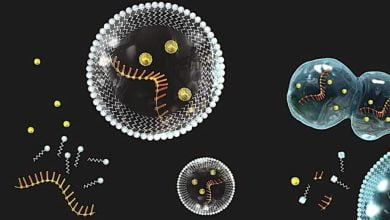
New study shows the devastating impact of life in space on astronauts’ bones
(ORDO NEWS) — Astronauts lose bone mass in space for decades, and many don’t recover even after a year on Earth, researchers said Thursday, warning that this could be a “big problem” for future missions to Mars.
Previous research has shown that astronauts lose 1 to 2 percent of bone density for every month they spend in space as the lack of gravity takes the strain off their legs when they have to stand and walk.
To find out how astronauts recover after their feet are back on the ground, a new study scanned the wrists and ankles of 17 astronauts before, during and after their stay on the International Space Station.
Decreased bone density. astronauts was equivalent to what they would lose in a few decades if they returned to Earth, said study co-author Stephen Boyd of the Canadian University of Calgary and director of the McCaig Institute for Bone and Joint Health.
The researchers found that tibial density in nine astronauts did not fully recover. turned red after a year on Earth, and they still lacked bone mass for about a decade.
Astronauts who went on the longest missions, which lasted four to seven months on the ISS, were the slowest to recover.
“The longer you spend in space, the more bones you lose,” Boyd told AFP.
Boyd said it was a “big problem” for planned future missions to Mars, where astronauts could spend years in space.
“Will the situation worsen over time or not? We don’t know,” he said.
“Perhaps after a while we will reach a steady state, or perhaps we continue to lose bone. But I can’t imagine that we’ll keep losing him until there’s nothing left.”
A 2020 simulation showed that over a three-year space flight to Mars, 33 percent of astronauts would be at risk. osteoporosis.
Boyd said some of the answers may come from the research currently being done on astronauts who have spent at least a year aboard the ISS.
Guillemette Gauquelin-Koch, head of research medicine at the French space agency CNES, says the weightlessness experienced in space is “the most radical physical inactivity”.
“Even two hours of exercise a day is like you’re bedridden for another 22 hours,” said a doctor not involved in the study.
“It won’t be easy for the crew to set foot on Martian soil when they arrive - it’s very tiring.”
‘Silent Disease’
The new study, published in Scientific Reports, also shows how spaceflight changes the structure of the bones themselves.
Boyd said that if you th If the bones of the body, such as the Eiffel Tower, were lost, it would be as if some of the connecting metal rods that support the structure were lost.
“And when we return to Earth, we compact what is left, but we don’t actually create new rods,” he said.
Research has shown that some exercises are better for maintaining bone mass than others.
Deadlifts have been found to be significantly more effective than running or cycling suggests heavier lower body exercises in the future.
But the astronauts, who are mostly fit and in their 40s, didn’t notice the drastic bone loss, Boyd said, pointing out that the Earth’s equivalent of osteoporosis is known as the “silent disease.”
Canadian astronaut Robert Thirsk, who has spent the most time in space, said his bones and muscles took the longest to recover from spaceflight.
“But within a day of landing, I felt like an Earthling again,” he said in a statement accompanying the study.
—
Online:
Contact us: [email protected]
Our Standards, Terms of Use: Standard Terms And Conditions.








